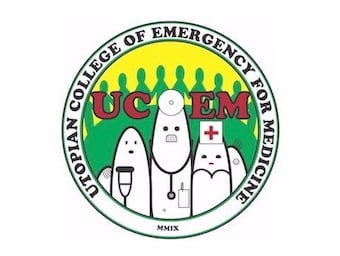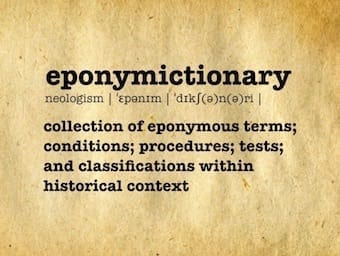
Sigbert Ganser
Sigbert Josef Maria Ganser (1853 – 1931) was a German psychiatrist. 'Ganser syndrome' an hysterical disorder he first described in 1898

Sigbert Josef Maria Ganser (1853 – 1931) was a German psychiatrist. 'Ganser syndrome' an hysterical disorder he first described in 1898

UCEM investigators recently learned of the existence of a shadowy organization known as the Society for the Prevention of Surgery.

Part 1 in a three part physiology phile series discussing the resting membrane potential and its effect on conduction

In relation to drug concentration and responses, what is the EC50 and what are spare receptors? Draw a dose response curve for an irreversible antagonist as the spare receptors become occupied.
Joseph Jules François Félix Babinski (1857-1932) was a French neurologist. Multiple eponyms including Babinski reflex, Babinski sign, Babinski syndrome

Not sick but you want the day off? No worries. These doctors are happy to make every weekend a long one...just ask and they’ll give you a certificate

Love itself is dangerous. If you don't believe me, read on to learn about all the ways amorous acts can threaten life, limb and... other body parts.

Professor Inglebert Struvite Staghorn hails from the village of Calyxia nestled on the anaconda-infested shores of the Amazon River. Although the young Staghorn's missionary parents encouraged him to study the healing arts, he instead discovered a taste for the art of no-holds-barred fighting...

Corrigan pulse is the excessive visible arterial pulsations in aortic incompetence. Not to be confused with the palpated 'water-hammer pulse'.

The incomparable Douglas Adams, of “The Hitchhiker’s Guide to the Galaxy ” fame, needs no introduction. Struan Sutherland, however, is a name obscure to most of the world, but not the world of venoms and poisons. His magnum opus, “Australian…

Vodcast overview of the haemoglobin – oxygen dissociation curve - BSCC

Ever wondered what the ultrasound peeps do in the 'sonocave'? The chaps from UltrasoundVillage.com take us through Tonsillar Ultrasound.